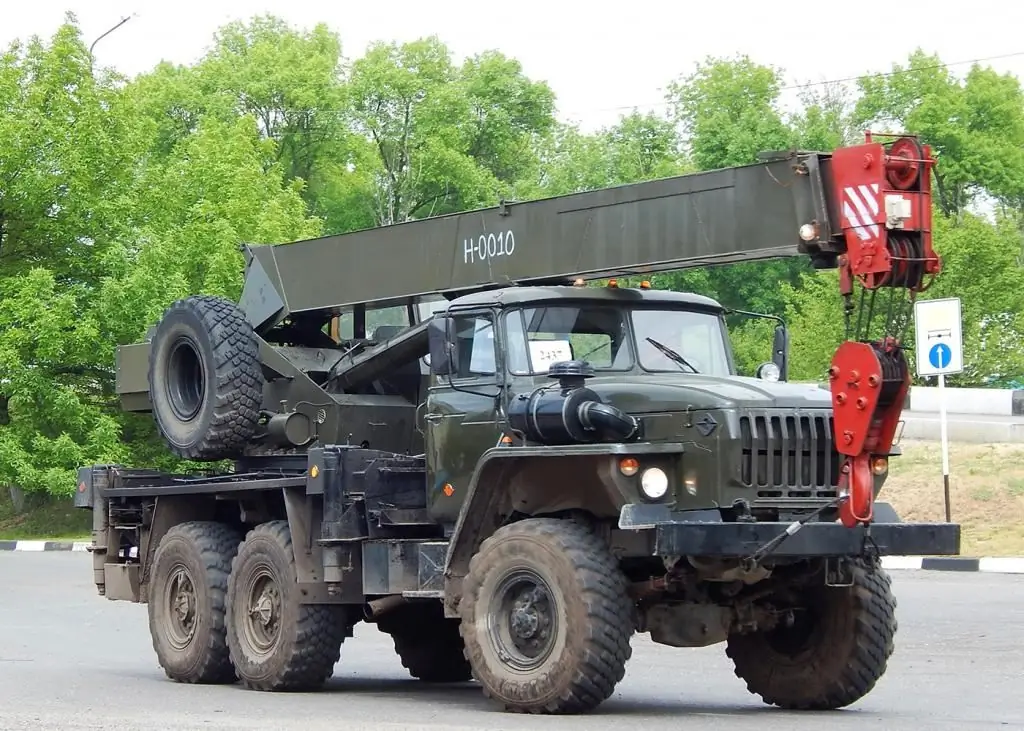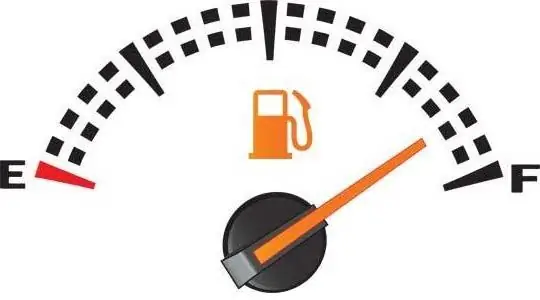2025 Author: Erin Ralphs | [email protected]. Last modified: 2025-01-22 21:14:11
Urban crossover "Kia Sportage" with a fuel consumption of about eight liters in urban mode attracted the attention of many motorists who want to buy a fairly versatile car for sane money. In this compromise option, many found many shortcomings. Someone considered the front seats uncomfortable, someone did not like the small list of available options and the interior, some considered insufficient visibility, and much more. This, however, did not prevent the Sportage from occupying a place in its niche. Car enthusiasts hoped for restyling, and in 2016, engineers from Korea heard the wishes and tried to satisfy everyone. But whether they succeeded or not is, of course, up to the buyers to decide.

Exterior
In the fourth generation, "Sportage" was based on the modified design of the previous generation of the crossover. Kia engineers increased the distance between the wheel axles from 2.64 to 2.67 meters, as a resultmaking the front and rear tracks wider. Ahead, as before, there are MacPherson struts in front, and a multi-link suspension in the back, but the engineers have finalized the shock absorbers and springs, providing them with new settings, which increased ride comfort. Changes in the geometry of the suspension had a positive effect on handling, as well as an increase in the rigidity of the rear silent blocks.
The steering mechanism has become more responsive: instead of 2.8 turns, it now makes 2.7. The engineers also increased the strength of the wheel bearings, but there are no changes in the all-wheel drive system: the rear axle is connected by an electro-hydraulic Dynamax multi-plate clutch, which is forcibly blocked at speeds up to 40 km/h.

For Russia
In the realities of our country, the fourth-generation Kia Sportage is good because it has better sound insulation and a more durable body. The numbers speak for themselves: the concentration of high-strength steel in the body alloy has increased from 18 percent to 51 percent. Compared to its predecessor, more elements are now produced using hot stamping technology. The new "Sportage" can also boast of the total length of adhesive joints: it has increased from 14.7 to 103 meters. These improvements, of course, affected the torsional rigidity of the body, which increased by 39%. In terms of aerodynamics, too, an improvement: the coefficient of air resistance has decreased by 0.02 (from 0.35 to 0.33).
Improved sound insulation of the floor, roof, area around the central tunnel, in the rear, side andfront racks. Vibration reduction was achieved by refining the internal combustion engine mounts, as well as the rear subframe mounts. The ground clearance, albeit a little, has also increased, although this change is insignificant - only one centimeter. However, an indicator of 18.2 cm is acceptable for Russian roads.

Comfort
In the fourth generation, the Sportage became 4 cm longer and 3 cm higher, so that the rear of the cabin became more spacious (by the way, the third generation was just blamed for the fact that the passengers in the back seat are cramped). The sofa for passengers has a tilt-adjustable backrest, but there is no longitudinal adjustment. But there is dual-mode heating, which not every car in this class can boast of. In the fourth generation, engineers made each seat heated and the steering wheel heated. The electric heating of the windshield, however, was not done: there is still only airflow.
The interior looks stylish, without flashy and out-of-the-ordinary elements: everything is rather conservative. The abundance of lacquered parts, however, does not add practicality to it: they are so quickly covered with prints that you have to have a separate cloth to wipe them. The front panel is made of two types of plastic: soft and hard, and a well-chosen texture allows them to be perfectly combined with each other. In top trim levels, you can optionally add a stitching of the plastic panel with a thread, which gives the interior a more expensive look.

Specifications
Three engines are available in the fourth generation. Fuel consumption "Kia Sportage", according to the manufacturer, in urban mode leaves from 10.7 to 11.2 liters. The exact numbers depend on the modifications. This is a 1.6-liter GDI Turbo gasoline turbocharged engine with a capacity of 177 “horses”, and in the top configuration it is complemented by a seven-speed dual-clutch automatic transmission. Two-liter diesel engine with 185 hp in the "company" of a six-speed automatic transmission, and a two-liter gasoline engine with a capacity of 150 hp is also available, in the car it "adjoins" either a mechanical six-speed gearbox or an automatic transmission with the same six speeds. This engine can work with both four-wheel drive and front-wheel drive.

Fuel consumption
"Kia Sportage" cannot be called a very economical car, but in some modifications it "eats" when driving on the highway only 5.5 liters of fuel. This is, of course, in the diesel version. Due to the fact that for this car there are several modifications that are quite different from each other, fuel consumption indicators also differ. "Kia Sportage" 2.0 l (automatic), for example, in the case of 6AT 150, it consumes 10.9 liters per 100 km in urban mode in the urban cycle. For the extra-urban cycle, the figures are: 6.1 l / 100 km.
Naturally, we are talking about the parameters declared by the manufacturer, in real conditionsscores may increase. In another variant with the same 150-horsepower petrol engine but a six-speed manual, we see slightly different fuel consumption. "Kia Sportage" 2.0 6MT 150 "eats" 10.7 liters per 100 km in the urban cycle and 6.3 - in the country.
Consumption indicators
Slightly increases the indicator in 4WD modifications. So the fuel consumption of "Kia Sportage" per 100 km for all-wheel drive increases to 11.2 liters in urban mode and 6.7 - when driving on the highway. In the combined cycle, this figure is 8.3 km. Not bad for a 150 horsepower 4WD car.
Fuel consumption for "Kia Sportage" per 100 km for a diesel all-wheel drive modification is 7.9 liters in urban mode and 5.3 - in the suburban. For the combined cycle, the manufacturer stated the parameters at 6.3 liters per hundred.
RCPP
One modification of this car is worth mentioning separately. It is equipped with a 1.6-liter 177-horsepower gasoline engine and all-wheel drive, as well as a robotic gearbox. The maximum speed here is 201 km / h, and acceleration to hundreds - in 9.1 seconds. The fuel consumption of the Kia Sportage with the "robot" is 9.2 liters per 100 km in the urban cycle and 6.5 liters per hundred when driving on the highway. In mixed mode - 7.5 liters. Of course, the manual transmission has its drawbacks, but in terms of fuel economy, it is almost equal to the "mechanics".

The most powerful
What about the most powerfula modification equipped with a gasoline engine with a volume of 2359 "cubes", a capacity of 184 "horses" and a maximum speed of 185 km / h, all-wheel drive and an automatic transmission? The fuel consumption of the Kia Sportage of this modification is 12 liters in the urban cycle, 6.6 liters on the highway and 8.6 in the combined cycle.
Recommended:
"Toyota Rush": owner reviews, specifications, equipment and fuel consumption

The Toyota Rush off-road car, reviews of which are given below, is a five-door crossover. The model entered the Japanese market in early 2006. The project was created in cooperation with the Daiyatsu branch. Accordingly, the car is also sold under two brands. Between themselves, the modifications differ only in nameplates, they are put up for sale in the sales offices of both companies. The specified car replaced the second generation "Rav-4"
"Discovery 3": owner reviews, specifications, equipment, power and fuel consumption

The third model of Land Rover Discovery has earned the recognition of motorists around the world. Among the advantages, motorists note the brutal image and extraordinary appearance of the car. In addition, it can easily overcome obstacles of varying complexity, has such advantages as wheel lock, four-wheel drive and high ground clearance. But even despite its positive qualities, a foreign car also has disadvantages that can spoil the joy of owning such a solid vehicle
KS 3574: description and purpose, modifications, specifications, power, fuel consumption and rules for the operation of a truck crane

KS 3574 is an inexpensive and powerful Russian-made truck crane with wide functionality and universal capabilities. The undoubted advantages of the KS 3574 crane are functionality, maintainability and reliable technical solutions. Despite the fact that the design of the truck crane cab is outdated, the car looks impressive thanks to the high ground clearance, large wheels and massive wheel arches
Why increased fuel consumption? Causes of increased fuel consumption

A car is a complex system where each element plays a huge role. Almost always, drivers face various problems. For some, the car drives to the side, others experience problems with the battery or exhaust system. It also happens that fuel consumption has increased, and suddenly. This puts almost every driver in a stupor, especially a beginner. Let's talk in more detail about why this happens and how to deal with such a problem
Iran Khodro Samand 2007: owner reviews, specifications, equipment and fuel consumption

The budget car market is very wide. Thanks to a huge assortment, everyone can choose the most suitable model of a cheap sedan or hatchback. Usually in Russia they buy Renault, Kia or Hyundai cars. But today we will pay attention to a less common instance. This is Iran Khodro Samand 2007. Owner reviews, features, specifications and photos - later in the article

